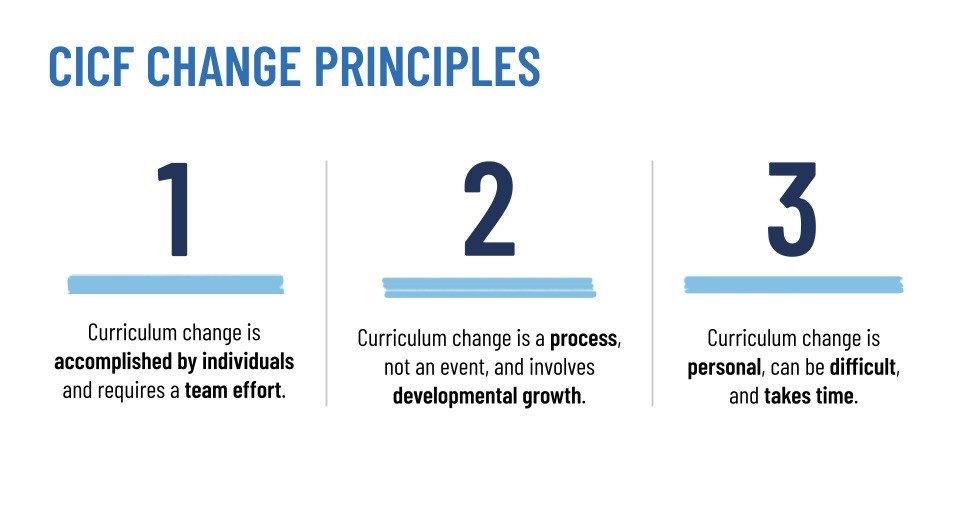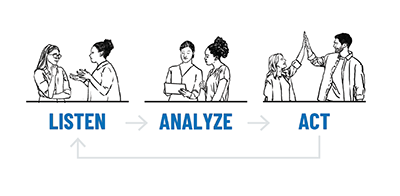Curriculum Implementation Change Framework
Schools and systems nationwide are adopting High-Quality Instructional Materials (HQIM) designed to help teachers provide meaningful and engaging learning experiences for students and to strengthen the systems themselves.
But adopting and effectively implementing HQIM is a complex and deeply personal change process that must be well-managed if curriculum implementation is to have any chance at success.
By helping leaders of curriculum implementation systematically understand how teachers are using their curricular materials, what teachers and school-level leaders think about them, and why, the Curriculum Implementation Change Framework (CICF) facilitates strategic, responsive decision-making about how to support teachers and school-level leaders. It enables implementation leaders to deepen community-wide commitment to the curriculum and advance sustained student access to high-quality learning experiences.

Tools
To gather and help leaders make use of these insights, CICF offers three sets of tools.
Surveys: A teacher and a school-level leader survey that ask about feelings, what's giving rise to those feelings, and nature of curriculum use.

Implementation Progressions: Curriculum-specific observation instruments that measure curriculum implementation quality along a developmental progression. CPRL has collaborated with curriculum developers to build Implementation Progressions for EL Education, Eureka Math Squared, Illustrative Math, OpenSciEd, and Wit & Wisdom.
Dashboard: Data visualizations using information from the survey and Implementation Progressions to guide analysis and inform action.
How CICF Works
The data from the CICF tools helps arrange teachers and school-level leaders across change categories and dimensions that implementation leaders can use to to make decisions about how to move people toward supportive, successful curriculum implementation. It also allows them to see change over time.
The CICF Change Categories provide insight into where teachers and school-level leaders are in their change journey.

Underlying the CICF Change Categories are three dimensions of change: teachers' and school-level leaders' feelings about their curriculum; teachers' extent of use and school-level leaders' engagement with their curriculum; and teachers' quality of use of their curriculum. Feelings and extent of use/engagement are measured through the CICF survey. Quality of use is measured through the Implementation Progressions.

CICF’s Development and Ongoing Evolution
The research team at CPRL developed CICF with input from curriculum developers, professional learning providers, change management and family engagement experts, and school system leaders. In 2023-24, CICF was piloted and field tested in more than 20 school systems across the U.S.
To learn more about CICF or to request a copy of the framework and tools, contact Molly Gurny ([email protected]) or Liz Chu ([email protected]).